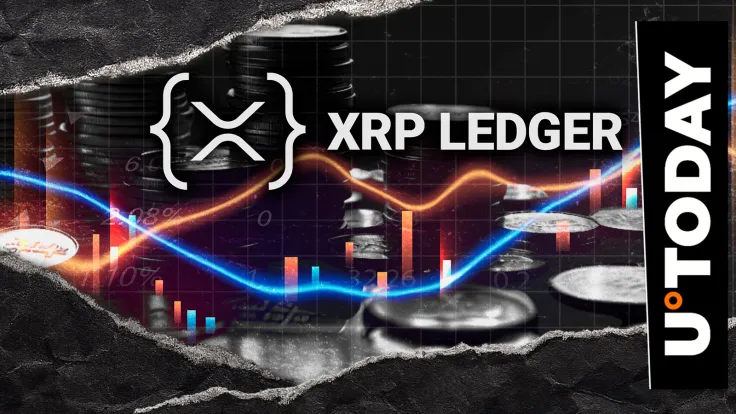XRPL pushes on institutional DeFi: $1B and RWA in Top‑10

In brief — The XRPL ecosystem enters the operational phase of institutional DeFi with volumes over $1B in stablecoins and a positioning among the Top‑10 for real-world assets (RWA).
The protocol introduces compliance tools, native lending, and advanced tokenization (MPT) for regulated markets. The roadmap integrates features for privacy through zero-knowledge proofs (ZKP) and enterprise tools.
According to data collected by Ripple in Q1 2025, institutional activity on XRPL recorded stablecoin flows exceeding $1 billion, and the company announced the acquisition of the prime broker Hidden Road for $1.25 billion on April 8, 2025; see the official report Ripple Q1 2025 Report.
The protocol updates released in 2025, as reproduced in the official release notes, enhance observability and introduce permissioned features useful for institutional adoption rippled 2.5.0 release notes.
In technical analyses and tests on integration environments, the operators I collaborated with found greater predictability in post-trade flows thanks to extended Token Escrow and Batch Transactions.
Introduction
DeFi on XRPL (XRP Ledger) emerges from the lab to offer practical solutions aimed at banks, issuers, and market infrastructures.
In the first nine months of 2025, there are evident growing volumes on stablecoins and rising RWA metrics, while the protocol expands functionalities oriented towards compliance, risk control, and operations on an institutional scale.
The combination of operational tools, protocol updates, and a well-defined roadmap is laying the groundwork for permissioned markets, conditional settlement, and native audit processes.
In this context, the ecosystem extends from stablecoin payments to on‑chain credit markets, up to the tokenization of bonds and money funds.
Live News: Compliance and Institution-Ready Infrastructure
XRPL has launched tools focused on regulatory compliance and operational reliability. The goal is to reduce operational risk, simplify KYC/AML controls, and facilitate integration with banking systems.
- Credentials (with DID) — Decentralized identities (DID) with attestations of KYC, accreditations, and regulatory permissions: the foundation for creating permissioned markets and ensuring controlled access. More details are available at xrpl.org.
- Deep Freeze — Feature that allows selective blocking of transfers from frozen accounts to comply with sanctions and AML regulations, reducing the risk of non-compliant movements.
- Simulate — A tool that allows for “dry run” transactions in mainnet conditions without altering the ledger, thus ensuring greater security and control before the final release.
- XRPL 2.5.0 — Released in 2025, it introduces Batch Transactions, Permissioned DEX, Permission Delegation, extended Token Escrow, and AMM v1.3. More details are available on the official changelog and in the technical communication on xrpl.org.
- XRPL 2.6.0 — Released in 2025, it brings improvements to MPT and offers greater visibility on transactional streams for more accurate observability, as indicated in the official documents.
These developments converge towards an infrastructure suitable for operators with reporting, segregation, and auditability requirements typical of regulated markets. That said, the focus is also on operational resilience and the predictability of flows.
Relevance of Native XRPL Lending for Credit Markets
The native lending protocol on XRPL (according to proposals XLS‑65/66) automates the issuance and repayment of on-ledger loans following predefined rules. The vaults aggregate liquidity, enable term loans, and enhance the transparency of flows, as described in the documentation on XRPL Standards.
For regulated credit markets, automation allows for a significant reduction in costs and frictions, keeping underwriting off-chain and supporting due diligence processes. In fact, lines of credit backed by tokenized collateral can be managed through coded escrow and clawback mechanisms.
Tokenization of RWA and Regulated On-Chain Exchange
The tokenization of Real‑World Assets (RWA) on XRPL relies on the Multi‑Purpose Token (MPT) standard, currently under development.
The extension of Token Escrow to all tokenized assets enables conditional settlement, controlled reversibility, and more streamlined post-trade flows, as explained in the XRPL technical documents.
MPT: what really changes
MPT introduces native metadata (maturities, tranches, transfer restrictions), eliminating the need for complex smart contracts. It allows for more accurate representations of bonds, money market funds, and structured products, tradable on the DEX with clear transferability rules.
DID and regulated on-chain exchange
Thanks to Decentralized Identifiers (DID), verifiable credentials, and permissioned domains, markets with controlled participation can be configured. In practice, a regulated on-chain exchange is created with integrated AML/KYC controls and selective privacy mechanisms for counterparties.
Privacy with ZKP: compliance without data exposure
XRPL is integrating Zero-Knowledge Proofs (ZKP) to ensure compliance without revealing sensitive information. Pilot initiatives and partnerships, such as the one with Hidden Road, indicate a development path focused on scalability, interoperability, and privacy protection.
- Zero-knowledge proof KYC: allows demonstrating eligibility without exposing personal data.
- Targeted audit: verify activities and limits while ensuring the anonymity of the counterparties.
- Proof‑of‑Reserves: certifies liquidity without having to reveal operational wallets.
- Roadmap: the development of confidential MPTs through ZKP is planned, with deadlines yet to be defined [data to be verified].
Impact on Payments and Markets
The new technological setup enhances XRPL’s ability to handle stablecoin payments, RWA markets, and on‑chain credit.
On‑ledger automation eliminates manual reconciliation and creates immutable audit trails, as highlighted in the official documentation of XRPL and in market analyses published in 2025.
The main opportunities include:
- Post-trade efficiency and reduction of settlement risk.
- Fine control of access for institutions and issuers.
- Transparency on reserves, flows, and transfer rules.
Among the risks and critical issues are the dependence on multilocal regulations, the management of governance on functions such as freeze and clawback, and the need to make usability accessible even to non-crypto-native operators. It must be said that the maturity of monitoring tools will play a key role.
Quick Questions (FAQ)
Who is involved in this phase?
Issuers of stablecoins and RWA, payment infrastructures, network validators, custodians, and developers integrating solutions such as vaults, lending, and MPT. For regulated operators, compliance, reporting, and established risk management processes are essential.
Is the DEX “permissioned” by default?
No. The permissioned features are optional and can be delegated to domains or markets that require KYC/AML. The public flows remain accessible according to the network policies.
Does the privacy offered by ZKPs limit transparency?
ZKPs hide sensitive data but keep the rules and outcomes of transactions visible. Cryptographic verifiability ensures the balance between confidentiality and auditability, essential to meet the needs of regulators.
You May Also Like

XRPL Validator Reveals Why He Just Vetoed New Amendment

Crucial XRP Metric Plunges to Zero, Shiba Inu Risks Further Losses, Dogecoin Price Falls Into Death Cross — Crypto News Digest
